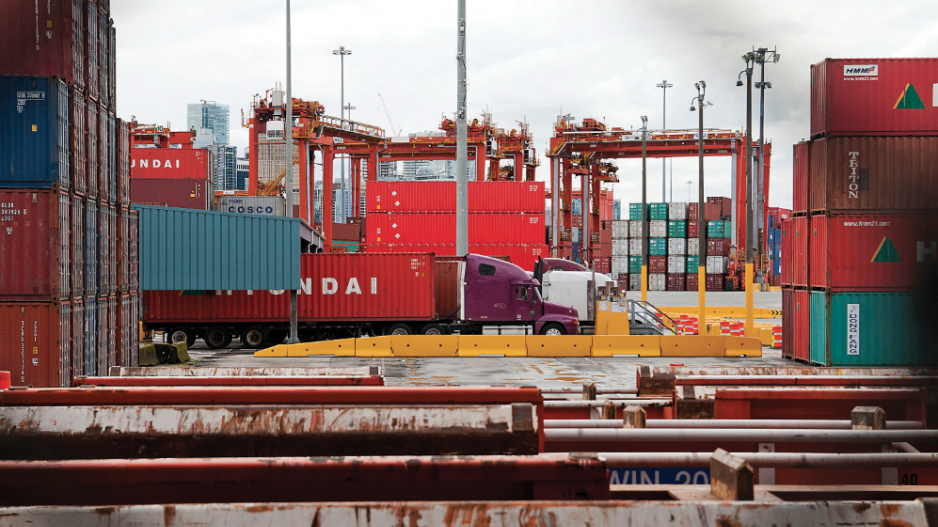Even with challenges to trade, the Port of Vancouver saw record-high cargo and container volume last year, fuelled by Canada’s strong economic performance and a global economic recovery.
On Thursday, the Vancouver Fraser Port Authority’s report on Vancouver cargo statistics for 2017 shows overall cargo volume increased by 5% year-over-year, weighing in at more than 142 million tonnes.
Container traffic rose significantly, up 11% from 2016 to reach a record 3.3 million twenty-foot equivalent units (TEUs) – an industry metric for measuring capacity. For a sense of how much space an additional 322,638 TEUs represents, picture an American football field completely covered in 20-foot shipping containers, and stacked about 2.3 kilometres high.
“It’s been a really strong year. It’s really pleasing to see this level of growth. It’s also a bit sobering, in some ways,” said Robin Silvester, president and CEO of the Vancouver Fraser Port Authority.
“It’s been a particularly strong year, but one particularly strong year is consuming the capacity of a major expansion project,” he added. “It really emphasizes the challenge that we have, which is a good challenge to have, about trying to continue to build capacity for Canada’s growth.”
Grain exports highlight both sides to that good challenge.
Under construction in North Vancouver is the port’s first new grain elevator in 50 years. Part of the G3 terminal project, it will ultimately enable an additional eight million tonnes of grain capacity, Silvester said.
If all of last year’s tonnage growth had strictly been for grain, the G3 Terminal Vancouver site – if completed – would have been able to meet it. That would be a good thing for Canada’s agriculture sector; it would also be a challenge to have three-quarters of a multi-year project’s capacity consumed in just one year of growth.
“The likelihood of the need for growing capacity in the port system here in Vancouver is almost incontrovertible,” said Silvester.
Planning for capacity has pushed the port to scope out what the next major infrastructure projects needed to support additional trade and port growth, and to mitigate the impact greater movement of goods will have on surrounding communities.
The authority has submitted nine applications to the National Trade Corridors Fund, the federal government’s merit-based program that will dole out $2 billion over 11 years to make trade corridors more efficient and more reliable. Silvester says the port is now “on tenterhooks,” waiting to see if their applications land.
“With this sort of growth, we really need to see federal stimulus of the corridor infrastructure to enable private-sector investment in port because we’re showing so clearly that the growth opportunity is there.”
For bulk goods moving through the Port of Vancouver last year, thermal coal saw a 69% year-over-year rise, animal feed jumped 107%, construction and materials climbed by 9%, and chemicals, basic metals and minerals rose 7%.
Gasoline volume fell 19%, forest products dropped 8% and outbound lumber specifically declined by 4%.
Silvester shared that any thickening of the U.S. border will almost undoubtedly push more of Canada’s trade toward Asia, through Vancouver.
From 2016 to 2017, outbound cargo headed to China, Japan and South Korea – the port’s top three destinations in terms of outbound tonnage – rose by 10%, fell by 2% and climbed 34%, respectively.
“It brings into sharp focus the scale of both the challenge and the opportunity,” Silvester said.
“Things like CPTPP (Comprehensive and Progressive Agreement for Trans-Pacific Partnership) further open up that opportunity which is economically really good for us as a country,” he added.
“Creating the infrastructure to realize that opportunity is potentially going to be the biggest challenge we face.”




